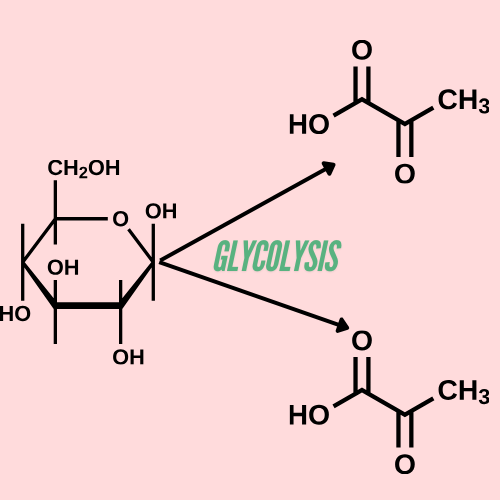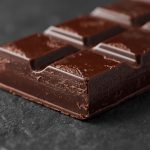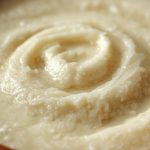Glycolysis simply refers to the breakdown of sugar. Sugar denotes carbohydrates which we know as the primary source of energy for the body. Carbohydrates range from the simplest molecule, glucose to complex sugars composed of 500 to 2 million glucose units like starch and glycogen. It requires a series of chemical reactions to oxidize glucose and transfer some of the energy in glucose to ADP, in order to form ATP resulting in the formation of pyruvate as the final product.1 This collective series of chemical reactions is called glycolysis.
Glycolysis is referred to as a universal pathway since it occurs in most organisms known and is highly evolved. It can occur in both aerobic and anaerobic conditions. In anaerobic conditions, lactate is the end product. It occurs in all the cells of the body. It is a major pathway for ATP synthesis in tissues lacking mitochondria like erythrocytes, cornea, lens, etc. The enzymes involved in glycolysis are found in the cytosolic fraction of the cell.2
To delve deeper into the earlier actions required for glycolysis to occur in our body, let us picture ourselves consuming a diet full of carbs. The various digestive enzymes and related processes break down the polysaccharide into monosaccharides including glucose. The monosaccharides are transported across the wall of the small intestine and into the circulatory system, which transports them to the liver. In the liver, hepatocytes decide whether to pass the glucose to the circulatory system or store it as glycogen. Cells take up the circulating glucose in response to insulin. Finally, glycolysis takes place, initiating cellular respiration.1
1.1 Steps involved in glycolysis: Glycolysis consists of 10 major steps. It initiates with the phosphorylation of single glucose to glucose-6-phosphate and ends with synthesizing two pyruvate molecules. These 10 steps can be summarized as follows:
Energy Investment phase
- Phosphorylation of glucose occurs with the help of the enzyme Hexokinase to synthesize Glucose-6-phosphate. A single ATP is consumed during this step.
- Phosphoglucoisomerase converts Glucose-6-phosphate into Fructose-6-phosphate.
- Fructose-6-phosphate is converted into Fructose-1,6-bisphosphate under the action of phosphofructokinase. Here, A second ATP is consumed as it donates its phosphate group.
Splitting phase
- Fructose-1,6-bisphosphate which is a six-carbon sugar unit is split into two phosphorylated molecules containing three carbon units each i.e. Glyceraldehyde-3-phosphate and Dihydroxyacetone phosphate by Aldolase.
- Dihydroxyacetone phosphate is converted back into Glyceraldehyde-3-phosphate by the action of triose phosphate. Thus, two molecules of Glyceraldehyde-3-phosphate are formed by a single glucose molecule.
Energy generation phase
- Glyceraldehyde-3-phosphate is further phosphorylated with groups donated by dihydrogen acetone phosphate in the cell to synthesize 1,3-Bisphosphoglycerate. Glyceraldehyde-3-phosphate-dehydrogenase aids this step. This step is important as it is involved in the formation of NADH+H+. In aerobic conditions, NADH passes through the electron transport chain and 6 ATP is synthesized by oxidative phosphorylation.
- Phosphoglycerate kinase converts 1,3-bisphosphoglycerate into 3-phosphoglycerate resulting in the formation of ATP.
- 3-Phosphoglycerate is converted into 2-phosphoglycerate by phosphoglycerate mutase.
- A high-energy compound phosphoenol pyruvate is produced from 2-phosphoglycerate by the enzyme enolase. This enzyme requires Mg2+ or Mn2+ for functioning.
- High-energy phosphate is transferred from phosphoenol pyruvate to ADP, leading to ATP synthesis.
The process of glycolysis can be expressed in the following equation:
Glucose + 2ATP + 2NAD+ + 4ADP + 2Pi = 2Pyruvate + 4ATP + 2NADH + 2H+
All other reactions in glycolysis except the three catalyzed by Hexokinase, Phosphofructokinase, and Pyruvate kinase are irreversible. Those three reversible reactions regulate the glycolysis pathway. Reversal of these chosen reactions leads to the synthesis of glucose from pyruvate (i.e. Glyconeogenesis)
Aftermath during Aerobic and Anaerobic conditions:
In the presence of oxygen, pyruvate is transported onto the Krebs Cycle (i.e. tricarboxylic acid cycle or Citric acid cycle). However, under anaerobic conditions, pyruvate is reduced by NADH to lactate with the help of the enzyme Lactate dehydrogenase. Lactate allows the regeneration of NAD+ which can be reused by glyceraldehyde-3-phosphate dehydrogenase so that glycolysis may proceed even in the absence of oxygen to supply ATP.2 Uninterrupted glycolysis is essential in skeletal muscle during excessive exercise when the oxygen supply is limited. Lactate formation also takes place in erythrocytes since, mitochondria, the site for aerobic oxidation is absent.
A condition called Lactic acidosis is caused due to elevation of lactic acid in the circulation i.e. inadequate supply of oxygen to the tissues with drastic reduction in ATP synthesis. A severe form of it can even cause death.
Energetics from Glycolysis:
In aerobic condition:
- From Step 1 (Hexokinase): -1ATP
- From Step 3 (Phosphofructokinase): -1ATP
- From step 6 (Glyceraldehyde-3-phosphate-dehydrogenase): +5ATP (2NADH enters the electron transport chain. 1NADH = 2.5ATP. So, 2NADH = 5ATP)
- From step 7 (Phosphoglycerate kinase): +2ATP
- From step 10 (Pyruvate kinase): +2ATP
Hence, Total ATP = ATP produced – ATP consumed = 9-2 = 7
In anaerobic conditions:
- From Step 1 (Hexokinase): -1ATP
- From Step 3 (Phosphofructokinase): -1ATP
- From step 7 (Phosphoglycerate kinase): +2ATP
- From step 10 (Pyruvate kinase): +2ATP
Hence, Total ATP = ATP produced – ATP consumed = 4 – 2= 2
During anaerobic glycolysis, 2NADH molecules are consumed during the formation of Lactate from Pyruvate under the action of the enzyme lactate dehydrogenase. Hence, The NADH molecules do not enter the electron transport chain.

1.2 Are EMP pathway and Glycolysis the same?
Glycolysis is often referred to as the Embden-Meyerhoff-Parnas Pathway (i.e. EMP pathway), named after the three biochemists who made substantial contributions to the knowledge of glycolysis. This article focuses on the EMP pathway. However, it must be kept in consideration that the EMP pathway is not the only glycolytic pathway observed in nature. Prokaryotes such as Zymomonas and Pseudomonas use the other glycolytic pathway i.e. the Entner-Doudoroff pathway, for the synthesis of pyruvate from glucose.3
1.3. Significance of Glycolysis:
Glycolysis is the primary step during the conduction of cellular respiration where glucose oxidation occurs (i.e. transfer of electrons) resulting in energy production in the form of ATP. This ATP produced is used by the cell for various metabolic processes. In RBCs, the glycolysis pathway happens to be the only source of energy. Likewise, it is also essential for the brain which depends solely on glucose for energy. Glyceraldehyde-3-phosphate is used during the synthesis of triglycerides and phospholipids. Pyruvate is used in synthesizing Alanine (amino acid) by the process of transamination. In conditions involving excessive physical activities, body muscles lack sufficient oxygen which is provided by anaerobic glycolysis.4
References:
1. Betts JG, Desaix P, Johnson E, Korol O. Anatomy and Physiology 2e. Second. OpenStax; 2022.
2. Satyanarayan U, Chakrapani U. Biochemistry. Fourth.Reed Elsevier Pvt. Ltd.& Books and Allied Pvt. Ltd ;2013
3. W T. Godbey. Biotechnology and Its Applications: Using Cell to Change the World. First. Elsevier PVT. LTD.; 2021.
4. Mishra D, Rai K. Biochemistry and Physiology.First. Thakur Publications Pvt.Ltd;2014







